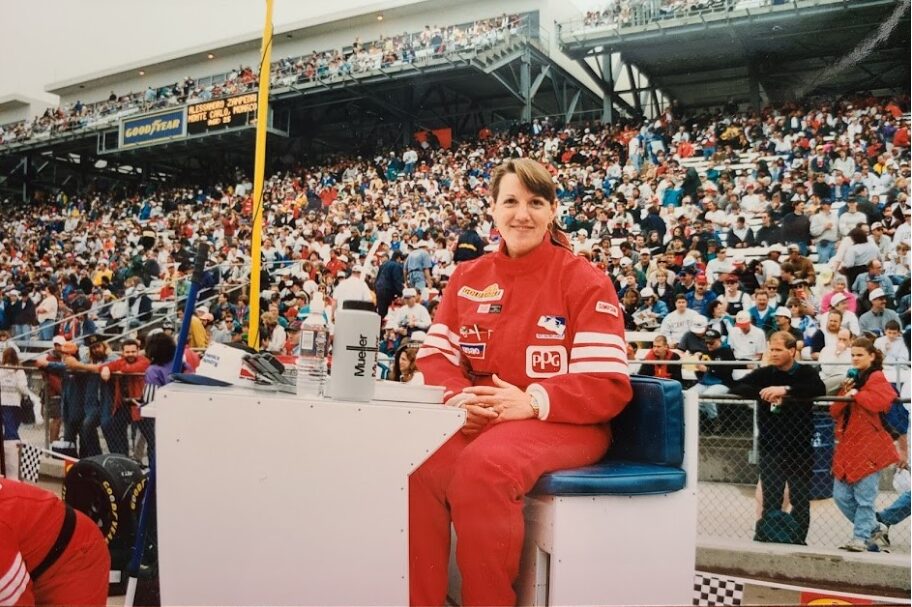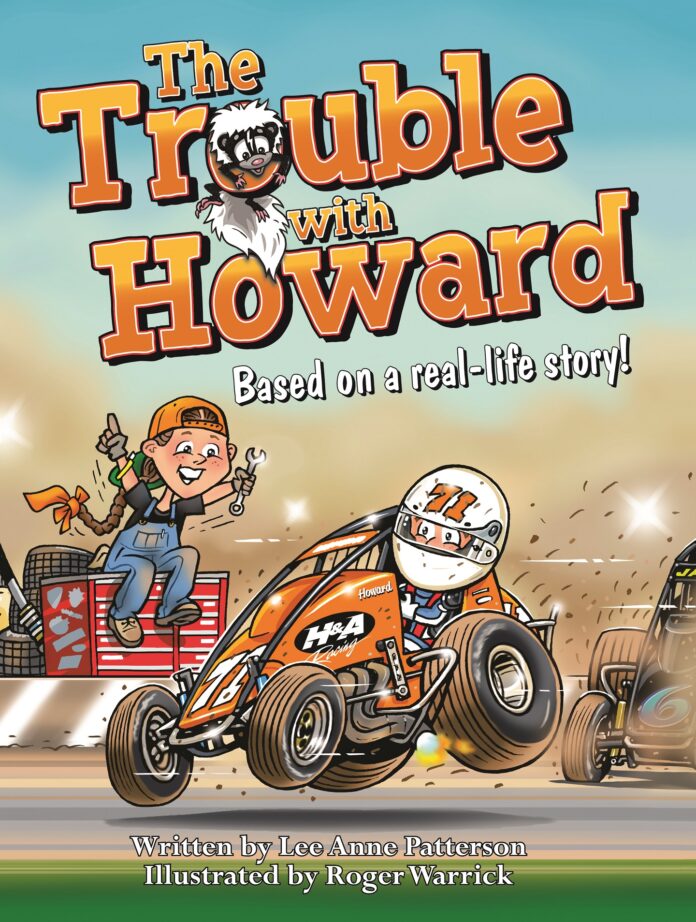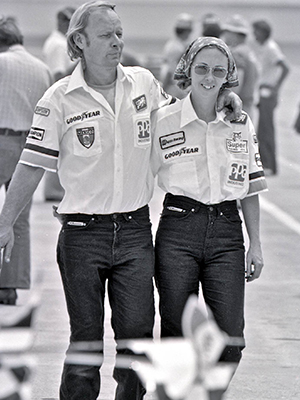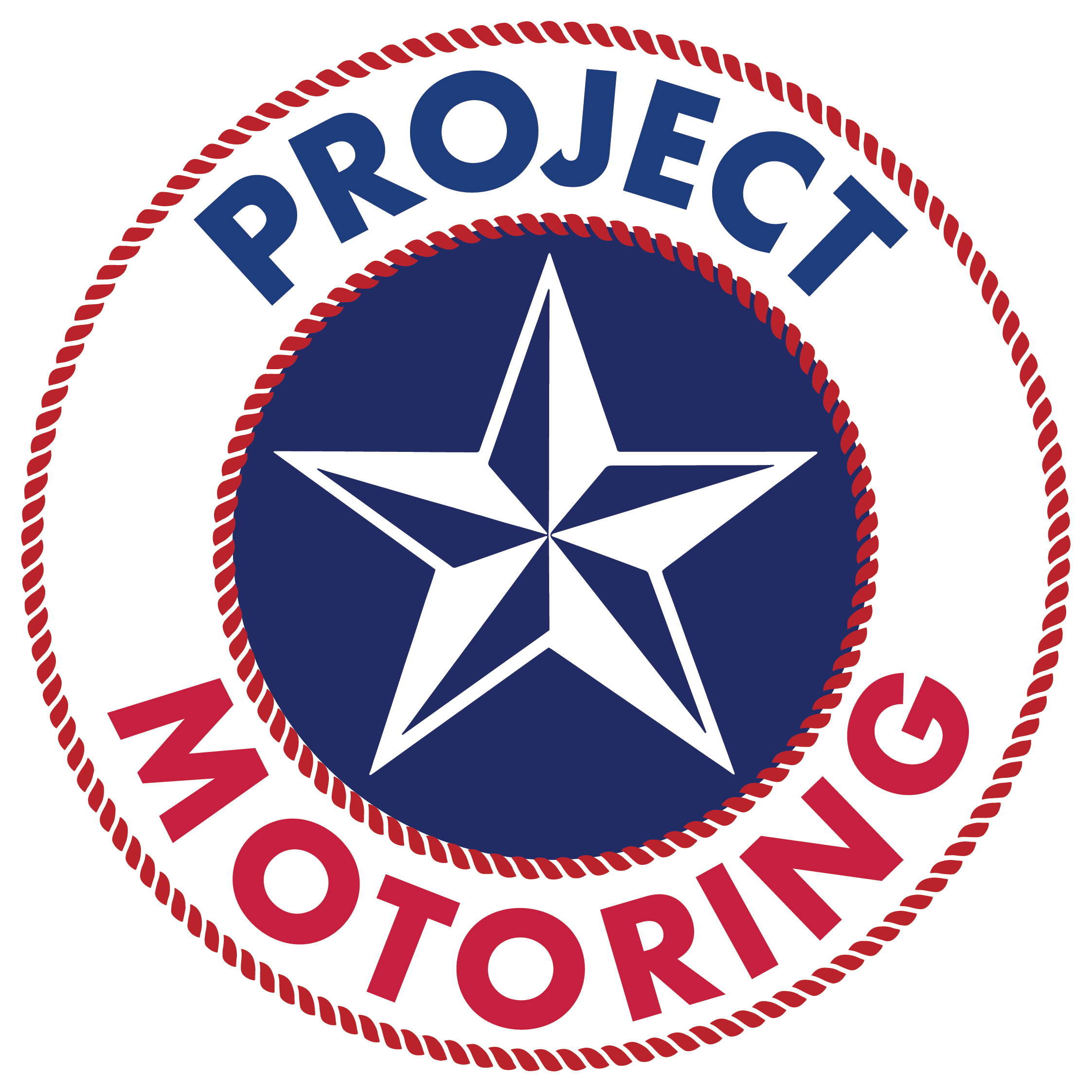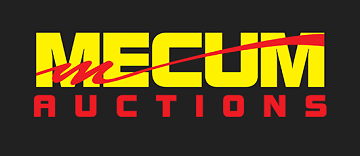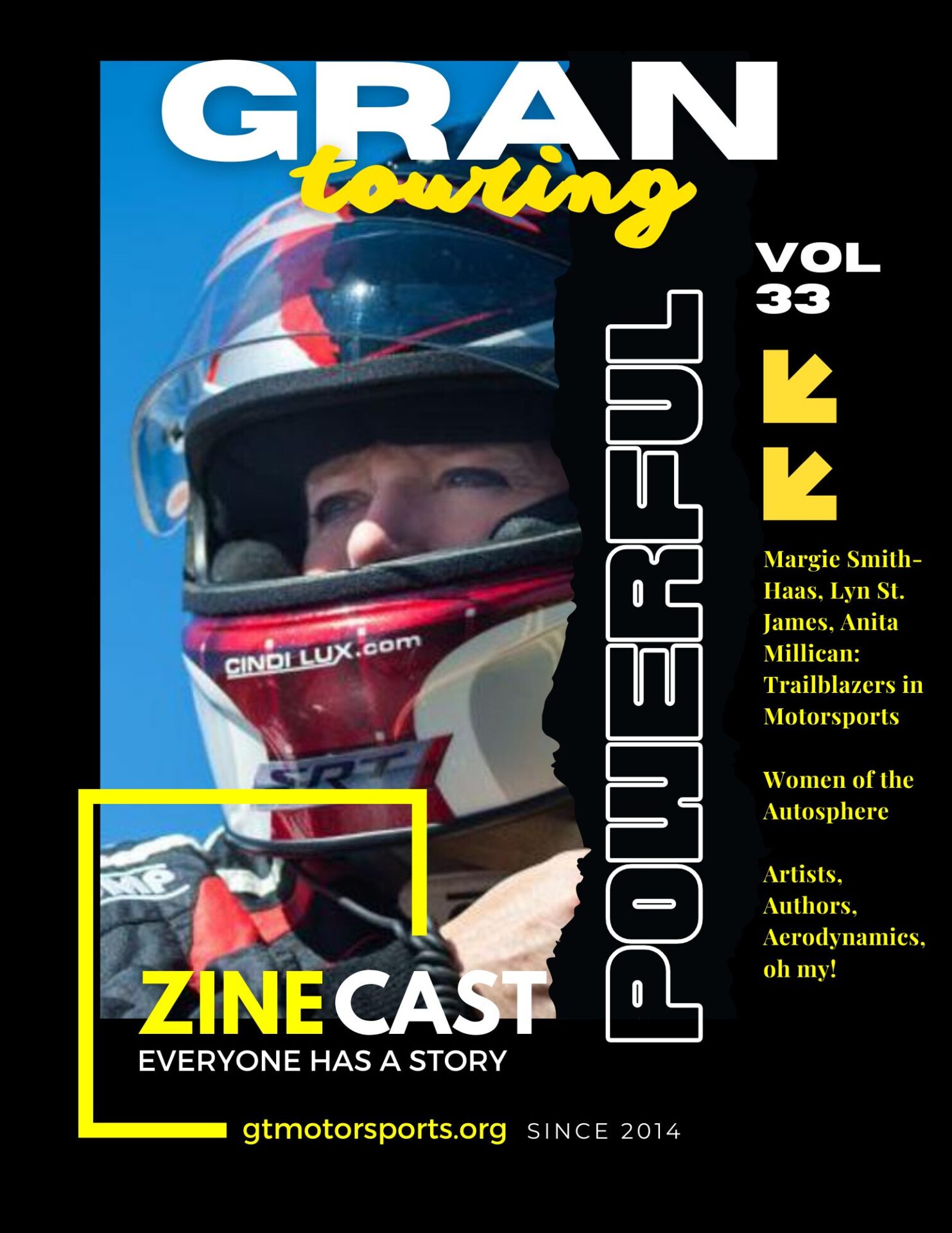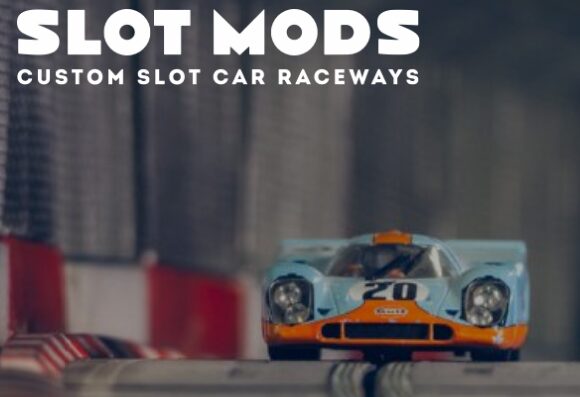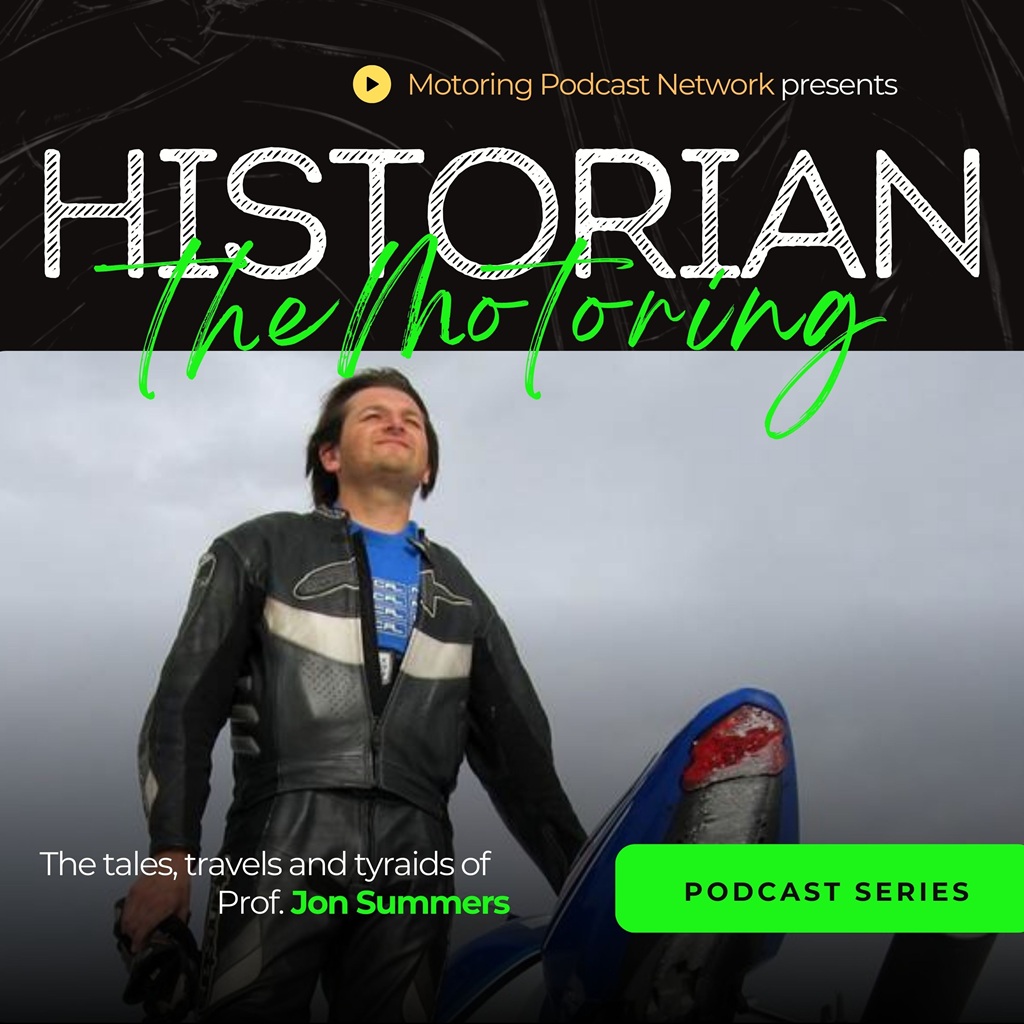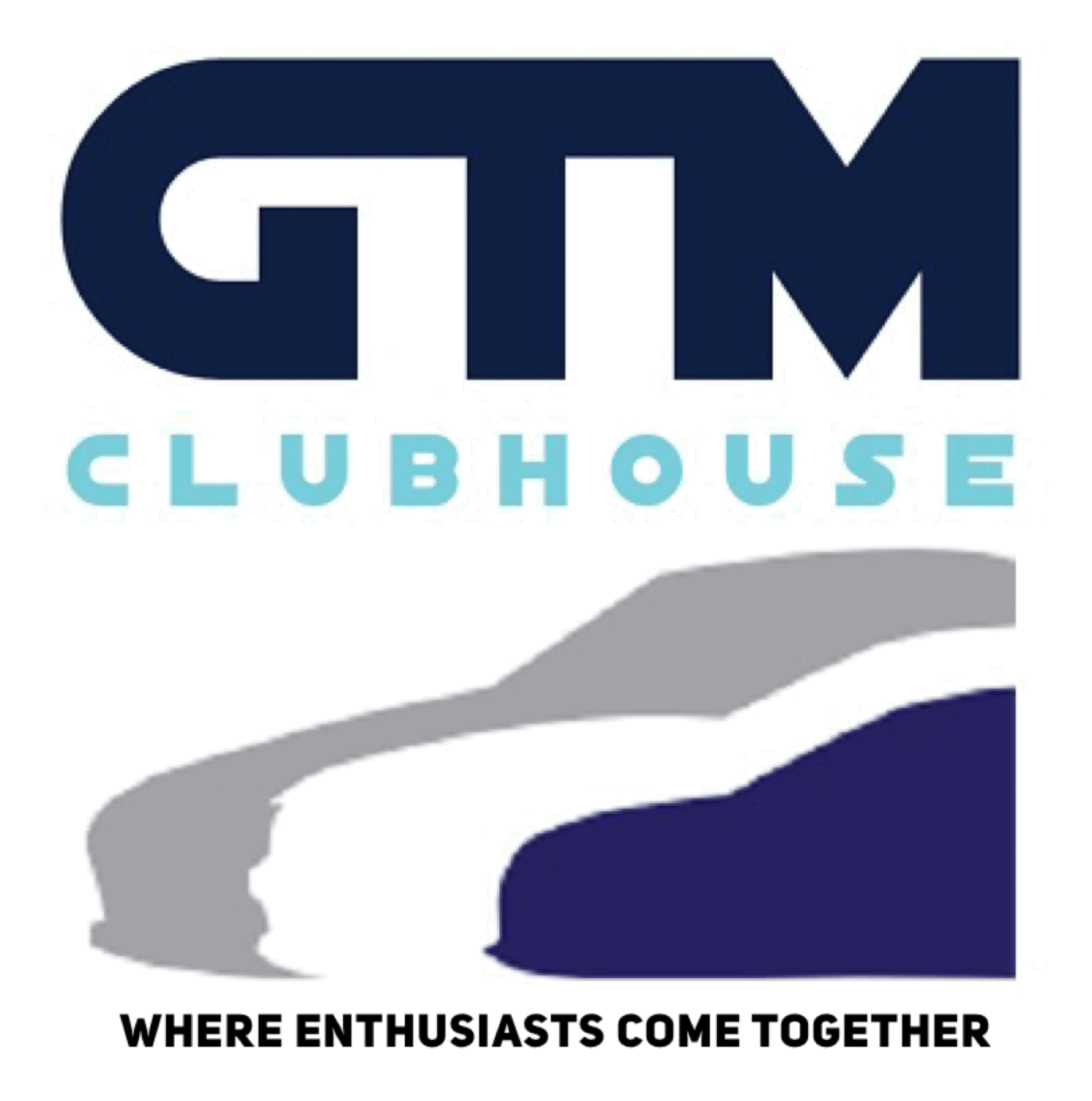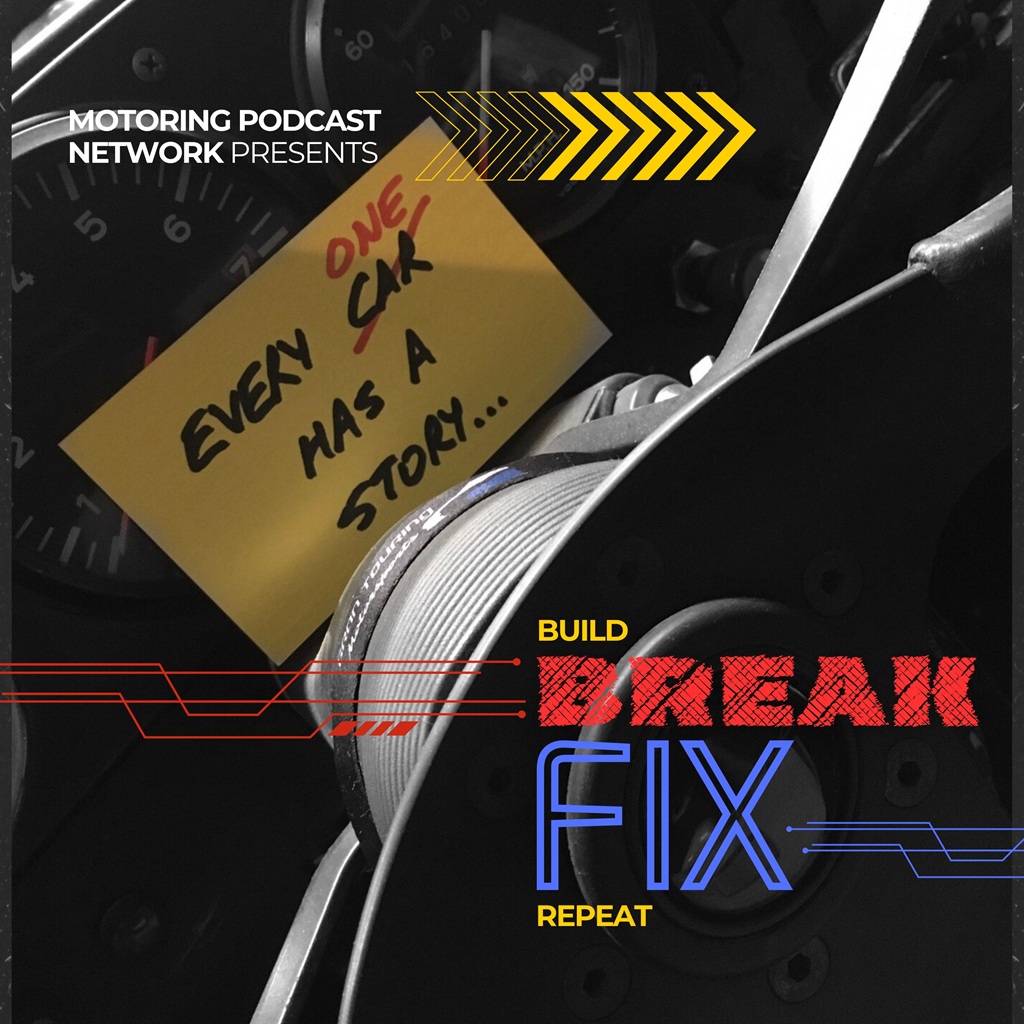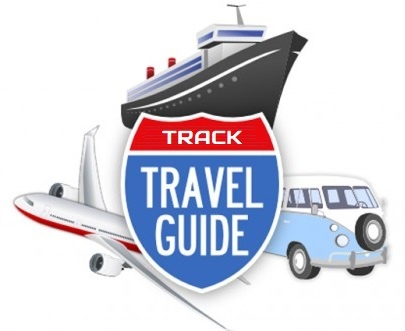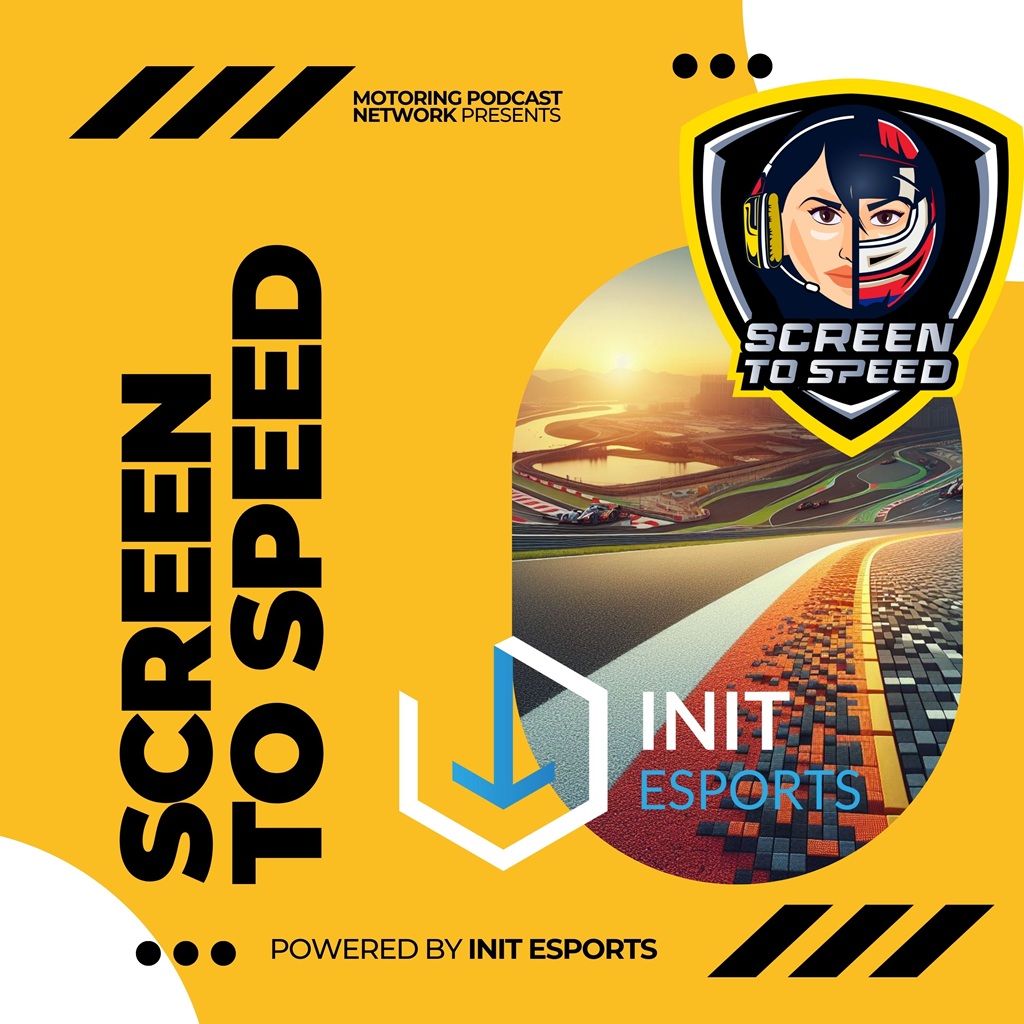With over 25 years of experience in motorsports, our guest has worked on projects like being Promotions Director for Sonoma Raceway, Series Director for Carroll Shelby, and a Team Owner and Team Manager in IndyCar, running full seasons for many years including the famed Indy 500. And she also worked in Radio producing and voice commercials!
Lee Anne Patterson now owns a boutique promotions agency working with select clients that have stories to tell. But she’s also produced her first children’s book “The Trouble with Howard” based on the real-life story of Howard and Anita Millican. And she’s here to tell us all about her automotive and motorsports journey.
Tune in everywhere you stream, download or listen!
 |  |  |
- Spotlight
- Notes
- Transcript
- Highlights
- Learn More
Spotlight
Lee Anne Patterson - Author, Voice Actor, Motorsports Enthusiast for Ground Effects Marketing
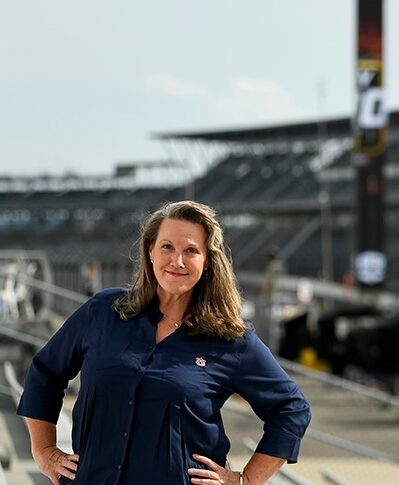
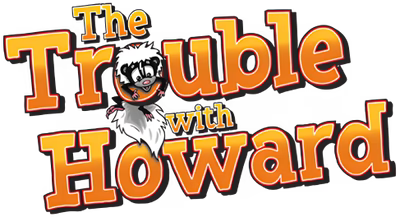
Contact: Lee Anne Patterson at leeanne@thegroundeffects.com | N/A | Visit Online!![]()
![]()
![]()
Notes
- Like all good break/fix stories… there’s an origin: The who/what/where/when/how and why of your entry into the Motorsports World – how did you get wrapped up in all this?
- Working for Carroll Shelby?
- The Indy Car Team – The good/bad/indifferent; and after a decade at Indy Car, what came next?
- You’re friends with one of our previous guests, Anita Millican – how did that come to be?
- And because of your relationship with Anita, you put together a book about her adventures, tell us more about your new book “The Trouble with Howard” – what’s it about?
- One of the questions that comes up often is “how do we make racing (real or virtual) more diverse?” – If a little comes up to you today, and says “why racing?” what do you say?
- What’s next for Lee Anne? Any other books in the works?
and much, much more!
Transcript
Crew Chief Brad: [00:00:00] BreakFix podcast is all about capturing the living history of people from all over the autosphere, from wrench turners and racers to artists, authors, designers, and everything in between. Our goal is to inspire a new generation of petrolheads that wonder, how did they get that job? Or become that person.
The road to success is paved by all of us, because everyone has a story.
Crew Chief Eric: With over 25 years of experience in motorsports, our guest has worked on projects like being promotions director for Sonoma Raceway, series director for Carroll Shelby, and a team owner and team manager in IndyCar, running full seasons for many years at the famed Indy 500.
Lauren Goodman: LeeAnne Patterson now owns a boutique promotions agency. Working with select clients that have stories to tell, but she’s also produced her first children’s book, the trouble with Howard, based on the real life story of Howard and [00:01:00] Anita Milliken. And she’s here to tell us all about her automotive and motorsports journey.
Let’s welcome LeeAnne to break fix.
LeeAnne Patterson: Hi everyone. Thank you so much for having me on today. I appreciate it.
Crew Chief Eric: And joining us tonight, returning to Break Fix is my cohost, Lauren Goodman, supervising producer of media and exhibitions from the Revs Institute. So welcome back, Lauren. Good to be back. Well, LeeAnne, like all good Break Fix stories, there’s a super heroine origin story.
So tell us the who, what, when, and where and why of how you got mixed up in the world of motor sports.
LeeAnne Patterson: I did not grow up in racing. I actually grew up bicycling in the Southern Bicycle League. So racing was not in my purview, but rock and roll radio was. And so I got my start actually through rock and roll radio.
I was working for 96 rock in Atlanta and most Atlantans will go, Whoa, that was like a huge number one rock and roll station in the country. And I was the continuity chick and then I was responsible for all the commercial air, which group copy did a lot of voiceover and got paid to say things like super shops because everyone deserves [00:02:00] performance.
It’s really fun. Anyway, from there, I fell in love with a promotions director, and the place that gave me a shot was at Sears Point Raceway, now known as Sonoma, and so I became the promotions director, and it just happened to be Motorsports that gave me the shot. And my very first job was to introduce NASCAR Winston Cup to the San Francisco Bay Area.
It was their very first job out there. And I remember going and having to tell the DJs that milk was a two syllable word from the South and that moonshine was no longer an appropriate question. But there was a guy named Bob Weeks who worked for Bill France Sr., had been working for him since the 50s.
Because one of the things I had to do was actually give garage tours in a garage I had never been in. Two days prior, I had helped the PR staff. With the media day, you know, it always is an embroidery was a new thing back then. And there’s a guy wandering around. I’m like, can I help you? And he goes, Oh, I’m Michael Waltrip.
I’m like, great. I’m LeeAnne. Do you need anything? He’s like, no, no, no. I’m one of the drivers. I’m like, Oh, okay, great. Do you need anything? I mean, I was just there to [00:03:00] do a job, right? And then Bob Weeks took me on a garage tour and gave me some stories about Smokey Eunick and Richard Petty and he goes, these stories, your accent, you’re going to be fine.
And so I did, I took all these people and how y’all doing? Welcome to Sears Point. They all elbowed each other and said, listen, honey, she said y’all. We took him on a tour and when we got to the haulers who walked out, but ladies and gentlemen, this is driver Michael Waltrip, who looked at me like you were so full of it.
And then he came over and gave me the hug of credibility. It was great. And that’s how I started a career in racing.
Crew Chief Eric: Did you live through the many name changes of Sears Point? Cause I actually still call it that even though it’s Sonoma and there was a brief period where it was Infineon. Infineon.
LeeAnne Patterson: I was just there for about two and a half seasons.
And it was, it was always Sears Point at that time. When it went to Infineon, that was slightly after my time. Of course, now it’s just Sonoma. So I still have stickers since I get to the point.
Crew Chief Eric: So how do you get involved with Carroll Shelby?
LeeAnne Patterson: One of the first things I did when I was at Sears [00:04:00] Point. Not only did I launch a race I’d never seen before, but I helped liaison to a film crew, which was Tim Conway’s Dorf Goes On.
And Budweiser had paid for the movie so they could have the commercial footage of the Budweiser car going around Sonoma Raceway. There’s a producer named Michael Collier, he’s a Brit that lives in California. I mean, I was living with the crew in the hotel, so it was great. Tim Conway got all the dailies, just, I mean, like a ton of fun.
But after I had left Sears Point, I moved back to Georgia and I made the decision, really wanted to stay in racing. So I was at Atlanta Motor Speedway. I’d done pre race ceremonies for them that day. After the race started was walking down the middle of the infield road. Nobody else is on the road except Michael Collier.
From California who really shouldn’t have been there and the races started were the only two people on earth in the middle of this infield road. He’s like, what are you doing now? I’m kind of looking for my next gig. He goes, have I got the job for you? And he called Don Landy and told him he’d be an [00:05:00] idiot if he didn’t hire me.
And Don Landy was Carol’s guy. So I got an interview and I became the series director for Carol Shelby’s Dodge Shelby Pro Series.
Crew Chief Eric: So did that require you to head back to
LeeAnne Patterson: California? The Shelby Can Am series was based in Texas. It was actually in McKinney, Texas. And you walked into this ranch style house and there was a big pot of chili in the front lobby because of all the Carroll Shelby chili.
And then right next to it was one of the Daytona Coupes and everybody’s like, what the hell do you people do here?
Lauren Goodman: I got to tell you, that makes so much sense because Carol Shelby said the best thing about winning Le Mans, it helps you get deals together. And McKinney, Texas is a little more where my people are from.
Yeah. That’s what you do out there in the middle of nowhere, Texas. You get deals together. How else are you going to get by?
LeeAnne Patterson: And the packing plant for the Shelby chili was in the brown paper baggage at the time with little seasoning packages. Every Shelby can and part box of parts that we sent out to all the special vehicle reps and the teams smelled like chili.
I mean, you would open up the box, you’d be like, woof, you know, cause the little chili parts were [00:06:00] everywhere. So, also a little known secret, every single one of Carol’s cars that was in the collection at McKinney, including Cobra 001, Smells like chili. When the Daytona was going across the auction block and Bob Bondurant was going to drive across the block, like, I wonder if that was the one at Carol’s, you know, because there’s a couple of them, right?
I’m like, all I have to do is sniff the inside and if it smells like chili, it really was Carol’s, right? But in order to do that, it would have looked like I was trying to kiss Bob. So I just, I didn’t know, Bob, you don’t understand. Yeah, they did have the car completely wrapped in plastic, but we had this little Dodge Omni that you had to drive Carol around in.
And literally you’d stick your head out the window and take a deep breath and then put that piece of drum a little
Crew Chief Eric: bit. So Dodge Omni GLHS Turbo Shelby edition. It’s got to be right. He’s got to drive in his own stuff.
LeeAnne Patterson: Yeah, that was it is. And I was out in Carol’s office. big L shaping California at one point.
And we were just, you know, just too in the bat one day about stuff. He had just kind of put the heart recipient, heart fund in [00:07:00] place. And so we were talking about his heart and we were talking about Lamont’s and at the time, nobody really knew that he won Lamont with a nitroglycerin pill underneath his tongue.
And that story’s kind of gotten out then, but nobody seemed to know that at the time. But we were talking about the GOHL and it goes like hell. Oh, okay, that’s what it stands for. How’d you come up with the number? How far is it to that telephone pole? Okay,
Crew Chief Eric: 50. Let’s go. Wasn’t it the GLHS was goes like hell some more?
LeeAnne Patterson: Probably. He was just so matter of fact.
Crew Chief Eric: So that puts us basically square in the early part of the 80s when those cars came out and they were being campaigned and there was a coupe version like a Charger slash Daytona coupe GLH and then the Omni GLH and all that. So that was part of that Shelby in conjunction with SCCA type of racing series.
Right. And I heard from people like Cindy Lux who got started racing those cars when she started her career. Right.
LeeAnne Patterson: This is later 80, early 90s. The Shelby Can Am series actually got its start in 1992. [00:08:00] They had a abbreviated season in 92 and I stepped in as a series director in 93. So it had a very short run.
It was a gift from Lee Iacocca, the Carol, the Dodge sponsorship. Got three years, buddy. We’re not going to renew. You got three years, make the most of it.
Crew Chief Eric: Because at this point he was involved in the quote unquote skunk works project, which was the Viper.
LeeAnne Patterson: Yeah. And so the Viper was our pace car. In fact, we had it at Road America.
And we usually had the red one, but at one point we had the first black off the line that was brought to us as a pace car.
Crew Chief Eric: Oh, the one that Jay Leno argues about all the time, whether it’s his or
LeeAnne Patterson: I don’t know that story, but they tossed me the keys and said, have fun. I’m like, yeah, yeah. But I offered a pace car ride to Chris Akanemaki at the time.
Because I got to pick a media specialist and he had already been very, very kind to us. But can I say on air what he said to me? Probably not. Absolutely. He said, Oh, are you offering to take a ride in your ass? Welcome to the chauvinism of the nineties, right?
Crew Chief Eric: You know, a lot of us [00:09:00] only got to experience Carol Shelby through that last film that was produced.
It shall be American, right? Where he’s doing the voiceover, he’s telling the story, he talking about all the different cars and the projects. And he does talk a little bit about Lamont in the early days, like you were mentioning. So what was it like working for Carol?
LeeAnne Patterson: You heard him come in the room or the office before you ever saw him.
He was very loud, very boisterous, very much a prankster, very much a jokester, which was great fun. You had to hold your own with him though. And mind you, at the time, I was the only second woman to run a series. Vicki O’Connor, she’s the blueprint, you know, with the Toy Atlantic series. The most successful support series ever in motor sports.
And that was all Vicky. And she gave me some sage advice and said, see if you can hold your own. Right. When I first went to work for Carol, somebody had arranged a Boy Scout breakfast for him to attend. Bobby Rayhall was the keynote speaker and Carol was just supposed to make an appearance. So I had to go along and manage Carol like, haha, anybody’s going to manage Carol, right?
I’m pretty young at this [00:10:00] time. I’m still not quite 30 yet. So way too young to be doing the job that I’m doing. So we go into this Boy Scout breakfast. We’re in the backstage and the guy comes in, Mr. Shelby, we’re so glad to have you here. Thank you so much for being here. And he’s like, great. He goes, we’ll get you up.
We’ll say a few words and then just have a seat, you know, to the left. And Carol’s like, okay. And the guy walks up and he starts turning to me, cussing me out like a sailor. I am unprepared. How dare you put me in this position? I don’t have your remarks, blah, blah, blah. I actually tried to give Carol Shelby talking points.
Yes. You may laugh at that. So, I’m like, but, you know, dah, dah, dah. And Sig says, I’ll be fine. And he goes on up to stage and I take my room at the back at one of the tables. Now there’s 700 little Boy Scouts in this room. Carol gets up on stage and proceeds to give the 20 minute funniest speech I’ve ever heard in my life.
Everybody’s holding onto their belly. We were laughing so hard, tears running out of our eyes. And when it came Bobby Rahal’s turn, he spoke for two minutes and sat down. And I watched. 698 little Boy Scouts run to Carroll for an autograph afterwards. [00:11:00] And two chased Bobby Ray Hall out of the conference room.
Then when we got to the little Omni, we get in the car and we belt in, we stop. And before I turned the key, I turned him and went speechless. Really? And we both started laughing. So that’s how my relationship with Carol started. You know, the words, I can take the joke. I can take the hit. It was really funny.
I mostly worked with Don Landy. I worked there for full season and we took the car count from, not that it was credit to me, it was certainly a lot of momentum. But by the time we got to Road America, we had gone from 20 cars to over 48. And counting. So it was explosive time and we did a lot of things right.
But then I received an offer to get married and go to Indy. And that’s a team that was running Shelby Can Ans. And then when the IndyCar IRL split happened, we were one of those little teams that could. And we took advantage of that opportunity and became a small team in the IndyCar that, frankly, one of those that supported the IRL didn’t have to get going.
Crew Chief Eric: We will [00:12:00] come back to that, but I think there’s another question Lauren wants to ask before we transition off of your Carol Shelby part of your story.
Lauren Goodman: I think it’s super fascinating. I, you know, I’m a car history nerd, and whenever I see these adaptations in film, right, about some of these characters, by the way, I don’t beat up on Hollywood.
I have an MFA in screenwriting. I I know sometimes the screenwriter has to do what they have to do.
LeeAnne Patterson: That’s right. To read the
Lauren Goodman: story forward. You gotta fudge some things. And we have a few GT40s at our museum and the tour guides always say, well, that’s not what really happened, what you saw on Ford versus Ferrari.
And I want to say, okay, we know, but it was a good movie.
LeeAnne Patterson: Yeah.
Lauren Goodman: I’m trying to imagine what it would be like to see my own former boss on film and to see Matt Damon. playing my former boss on film. That must’ve been kind of weird.
LeeAnne Patterson: I was skeptical that Matt Damon wouldn’t be able to pull it off because he’s short.
He’s a little New Englander. No offense to Matt, but I think he actually did a great job. He got lost in the characters. You didn’t see Matt, in my [00:13:00] opinion. I think he did a pretty good job of getting the essence of Carol. His pace, his walk, his intensity, and his sense of humor. Would he have thrown lug nuts out on the track?
Abso friggin lutely. You know, he absolutely would have done that. There are other stories I’m not sure I can tell, but he was a guy because as Carol told me, look, I spent every single day of my life, not expecting to live to the next day. Okay. That’s how bad the heart was. And so every five years long, modern medicine would come along and do something and kept him going.
He didn’t expect to grow old to 80. He didn’t expect to make it to 40. And so he truly lived his life as what are you going to do to me? Kill
Lauren Goodman: me? I think that’s actually kind of almost endemic among that generation of racers because it was so deadly. I think so, too. They just said, I may not be here next week.
So you know what, tonight, my friends and I are going to get so drunk after the race. We’re going to have to maybe roll back into the hotel room, not remembering how we got there. I [00:14:00] just thinking about some really good stories I’ve heard from some folks who drove in the 60s and 70s. I won’t name any names because they’re guilty.
They’re not protecting the innocent here. I went to the motel room and I tried to get out the next morning and my crew had nailed me into my hotel room, had just nailed the whole door shut and I had to get out naked from my motel room window. And run down to my car. Yeah. And that was just a normal weekend.
LeeAnne Patterson: Yeah. There, there was the guy who took the girl back and the roommate got tired of it. And it was at the motel, you know, where it opened up to the outside parking lot. Mm-Hmm. . So he just opened up the curtains, turned on the light, shut the door, and locked it. And they were both sprawled out, naked on the bed, passed out.
You know, everybody’s Googling and you know, but those were the racing of the really fun eras when there weren’t any cell phones to get anybody in trouble.
Lauren Goodman: Not that they weren’t athletes, but it’s not like. Quite like it is today. We’re like, they’re all on a special diet and have 20 trainers helping them.
Well, we could die tomorrow. Let’s have a cigarette and then go driving. Well, they also stayed in shape
LeeAnne Patterson: [00:15:00] just by doing it because not only were they driving, you know, IndyCar or stock cars, but they were driving the late model on Wednesday night and they were driving a Sprint car race on Thursday. And they stayed in shape physically just by driving the cars.
But Carol would have, I think, loved that movie. Mostly because it honored his friend and I think it did do a really nice job capturing two things one his sense of humor which is Epic. And two, I think the editing of the musicality of The Perfect Lab elevated driving to an art form in a way that we’ve never seen before.
I went to see the movie by myself, I didn’t want to be distracted, and I listened to the crowd around me and there was a young mom and a daughter who said, you know, I’ve never really gotten racing, but I get this. This is an art form. And I thought, yeah, I thought they nailed it.
Lauren Goodman: I was not a car person until the pandemic.
Like you, I didn’t grow up in a car family or a racing family. I was a film student. I love movies and I saw Ford versus Ferrari. And that was my reaction too. I said, I grew up learning how to play music. Oh, I get it. Now a car is an instrument and a track [00:16:00] is like a piece of music.
LeeAnne Patterson: And
Lauren Goodman: so you play it.
What’s really fun about the way you play this. Somebody wins or somebody
LeeAnne Patterson: loses.
Lauren Goodman: And then it just adds to the drama. Now, of course, there would have been plenty of sexism going on at the time, but they conveniently leave it out of the movie because they realize women are going to watch it, too. And they want women in the audience and I’m seeing that a little bit, too.
And honestly, I really like what Liberty Media has done with Formula One. They said, instead of it being Bernie Eccleston’s, uh. Little fantasy, why don’t we put women in the engineer seat? Why don’t we promote that instead? Which I got to tell you, if I had come upon formula one earlier, I would have been really turned off by its approach to using women as decoration, which still happens in some forms of racing, some categories, and it’s changed a lot, not completely, but it’s changed hugely.
I’m sure you’ve seen it from day one. Oh,
LeeAnne Patterson: yeah. I mean, when I was in the garage in the IndyCar days. There were still literally days, and this is in 1995, this isn’t the dark ages of the [00:17:00] fifties or the sixties, and there were times on move in day, I was still the only girl there, and the ladies restroom was locked, you know, and I had to go find a key.
I was also the only female owner in the group at that point. And so we’d have owners meetings and under 30, you know, here I am actually, I was right at 30 at the time, but obviously very young compared to Leo Mel and, you know, some of the other guys that are there. Okay. And yeah, there was a lack of understanding, but I’ve documented, which is how I got to the whole Anita thing when I met Anita.
But we started understanding, and Marshall Pruitt from Racer Magazine, he was my data guy at the time. And we were just talking about, because I came into the garage area eight years after women had first been allowed in the garage area. 1980, before then, women couldn’t even go in the garage area and hand the guy a sandwich.
Couldn’t even hand them the car keys, right? And so in 1980, this all changes when they need it. And by the way, the threshold that made that possible was the media gals. Media always is the first in, because the gals can come in and say, I’m covering this, I’m reporting this. And that’s [00:18:00] exactly what happened.
The Indy 500, a reporter female. Came in and said, I want to be at the driver’s meeting and she sued and Tony Coleman said, okay, let’s have a conversation. And so he acquiesced to any official licensed journalist, female could come in and get credentialed. And so that’s why she got in. And when the Indianapolis star covered that women wants to get into driver’s meeting, they posted a photo of Mario Andretti telling Johnny Rutherford a joke and they’re laughing their heads off.
That’s the photo underneath the caption. And I’m like, okay, this is kind of horrible. But I also know that it took less than 12 hours for non credentialed women to suddenly get a pass. And I once asked Tony Holman’s gal, who was his secretary, I said, so what’s the deal? Chauvinist, what was up with the women?
Why didn’t he like us? And she goes, it actually had nothing to do with that. I’m like, okay, I’m listening. She goes, it had everything to do with, he didn’t want the garage to turn into a party. And there were some men that didn’t need to be in there either. [00:19:00] People’s lives are at stake. One of the reasons why you had to wear sleeves and you had to wear long pants and things like that in the garage wasn’t necessarily for insurance and protection, because the girls were so scantily clad that the guys were dropping wrenches and making mistakes on cars, ogling the girls.
They need the girls to cover up. You know, there’s that aspect to it. I once asked one of the wives who was divorced from one of the big time guys, the era, and I said, how did they put up with it? She said, but you need to understand back then hundreds of women were throwing themselves at them. Why would they respect us?
Excellent point. There’s a lot of girls, their only way they thought to get in was to sleep their way in. And certainly there are tales of the girls that went around this circuit and went up and down the pit lane until they got to a driver or crew member or whatever that went up to the next level and then they slept up and down that pit lane until they finally got to the top level, right?
So that’s happening and yet there’s girls that want to do the job. can do the job, or capable of doing the job, but we’re being compared to the girls [00:20:00] that are not doing the job. This is part of the battle, but I started trying to figure out, okay, well, who got here first? Because I had met Anita, and I started asking the right questions, and that’s when we went through and documented the fact that Anita was, in fact, the very first woman ever licensed as an IndyCar mechanic.
Lauren Goodman: And when she came in, she kept her head down because there was no diversity executive watching out for her.
LeeAnne Patterson: No, no, or intimacy specialist on the film set. I mean, that didn’t exist. And some of the women were not happy with her being there either. Why do you feel like you have to go to your husband’s office?
I don’t go to my husband’s office. And they called her names and people tried to pull her crew shirt off of her. And they tried to steal her heart card. And, you know, Howard really defended that. So in the book, The Trouble with Howard, which we’ll get to, the dedication is to Anita for the first to walk through the gate, and it’s to Howard for holding the gate open for her, because for every rat jerk face there was that was trying to keep us out or trying to sleep with us to do a [00:21:00] deal or whatever it was that was a me too moment of du jour, there’s also the guy that said, know what?
You can do this. I think you’re gonna be great. Let me help you. And open up the door. And you have to acknowledge that, and you can’t say, you know, only women should be doing this either. We need men to be men. But we just need everybody to be able to do what they are passionate about doing regardless of gender.
Crew Chief Eric: That’s the goal. We’ve stepped back into your IndyCar era. And you’ve mentioned Anita. So if you’re listening to this the first time and you didn’t listen to the episode that Lauren and I were on that LeeAnne helped get organized with Anita Milliken and Caitlin Brown, I highly recommend that you go back and listen to Anita’s story to kind of put the context and the reference back into what was just discussed because it’s extremely important to motor sports, especially women in motor sports in North America.
That being said, as we bring the audience back into sequence here, we’re talking about your IndyCar time. And so you said Anita predated you for about eight years, but she worked in the IndyCar [00:22:00] world for many, many years. She said she retired in the mid 2000s or so. And so she had a good long run there. So did you encounter her as part of like the shock support that she was giving or working at Penske and that as a team owner?
LeeAnne Patterson: Yes, we knew Howard at the time too. He was very sick at the time, but by that time they had opened up their shock shop, say that three times fast, in Danville. And she was handling shocks for us for the Can Am cars. And she was caring for Howard at the time. And then I didn’t get really close to her. She ran the shock business by herself for a year or two.
So she was just down there working her tail off. And then Jeff Ryan, who had founded Penske Shocks and had been kind of a son to Howard and Anita, inventing the first two way shock, the first three way shock, and asked them to do the shock dyno, pulled her up to Penske. And so she went up there for a couple of years, but when she came back to Indy, that’s when the women that were part of our racing sorority just really absolutely embraced her.
And that’s when I actually [00:23:00] got to know her.
Crew Chief Eric: But she was still doing shocks at the time, Fred. So as a team principal, you get to see a lot of different angles of how the motorsports world works, not just from the drivers out there competing, but from the business side behind the lines and in the pit boxes and everything else like that, you’re there in the late eighties, early nineties, as you said, you mentioned the media teams coming in and kind of breaking the barriers and opening the doors for women to be allowed at Indianapolis.
And I remember the first time I interviewed Lynn St. James, she talked about being one of the female journalists in the middle eighties period. And her goal was always to get behind the wheel of an Indy car. And that happened in the early nineties. So that would have overlapped with your time as a team owner.
Yeah.
LeeAnne Patterson: Lynn raced when I was there.
Crew Chief Eric: What was that like? I mean, she was the first woman behind the wheel to win rookie of the year.
LeeAnne Patterson: I met Lynn actually at Sears Point. She was in the Trans Am series and we ran a women’s racing 101 day with the Bondurant school. 60 winners on the radio station got to come [00:24:00] up and get behind the wheel with the Bondurant cars and they got hot laps with Lynn, which was great for Lynn because she basically got to drive a Trans Am car around the track.
A whole lot of track time but in front of the race. But that’s when I first met her. And then obviously she came in and she was running at Indy while I was there. She was running for Dick Simon. In fact, she and my driver got tangled up at one point. So I’ll defer that part of the question. Lynn has done an incredible job dealing with women drivers, but there was a void in supporting the girls in the pits, you know, the ponytails in the pits and in the fire suits.
That wasn’t happening. This is where we went and documented. Anita is P1, 1980. Right on top of her was Eloise Agarza. Eloisa Garza built the chaparral car for Jim Hall, Dale, the carbon fiber work. That was Johnny Rutherford’s car in her first race ever. She got flown in a private jet to the Indianapolis Motor Speedway on Jim Hall’s team.
And believe it or not, Eloisa was the first woman paid. Anita just got a portion of [00:25:00] Howard’s check. So she didn’t actually get a paycheck. Eloisa was the first woman actually hired and paid as an appropriate crew member. And then she ended up opening up her own shop, E. G. Composites, in the most inventive era of all of IndyCar, and she’s doing all the composite work.
So she’s P2. We think P3 is Linda Connie. Linda Connie went to small engine block GM school, and then she went to the Russell Mechanics School, and A. J. Foyt hired her on her crew. There’s a whole lot more to that story, but she ended up going into Simpson Helmets and getting to know all the drivers and all the helmets, but she could disassemble a small engine block in a pair of chinos looking dapper.
Faster than any man I know and then from there, you end up, I think, with Rosella, who was the engineer at Indy lights. There’s 1 or 2 other girls in there that don’t quite know their name. They were rubbing on body work over here. And there’s a couple of others in there. That’s a little bit sketchy at that era.
Right after Rosella, you get Kate Goodlock, and of course, Kate’s now a championship winning engineer, but understand that [00:26:00] by the time Anita starts in 1980 and you get Kate, it’s almost 15 years, so you’re talking about five, maybe seven women that are working on cars, turning wrenches on cars in a 15 year period.
I’m management, so I’m not making any executive decisions about performance. I’m doing all the team stuff and marketing and hospitality and PR and paying the bills and transportation and all that kind of stuff. I once figured out that Michael Andretti had six people doing the same job I was doing. I’m like, Oh, I should get some help.
But I was tired and there were a lot of PR chicks, polite term, respectful term, because that’s a hard job too. There were certainly ones that made their way up into the upper echelons of the media. May was there when no other girls were there. There was some girls working, uh, hospitality in Penske that were doing just fantastic work.
But that engineering squad was a really, really, really small number. And it didn’t explode really until the last five years.
Lauren Goodman: I was at the season opener for IndyCar at St. Pete. And you know, I got a pit lane pass. If you’re [00:27:00] coming from European Grand Prix racing, you go to IndyCar race. And it’s like, wait, it only costs me how much, and I can just walk around.
I spent that on beer at the Miami Grand Prix. This is amazing. So my sister and I are just like walking around. We almost get run over by Mario Andretti on a scooter. That was worth the whole price of admission. Everywhere I looked on the pit wall, in the engineer’s chairs. I saw women and I was like, well, that’s how it should be.
It shouldn’t be a, like a little example. Like it should just be like, well, why wouldn’t a woman want to do this? And that wasn’t historically I know the way it was.
LeeAnne Patterson: Yeah. But now it’s gotten cool. Now it’s gotten popular and the women are doing the job. And I will say from the girls back in our era, we were women that didn’t really want to be singled out as quote women.
Now it’s cool to talk about it. Right. But back then I just wanted to be able to do the job. Because I love the work. Racing was my sport too. Okay. And so that’s what everybody forgets. [00:28:00] It’s like, why do you want to be there? And because I love this job, I’m good at it and I can balance it and it’s competitive.
I mean, out of all the jobs I had, promotions director, series director, team, I’m actually one of the few people that’s worked in all three of those components, which is what racing has. You got to have a track, you got to have a sanctioned body and you got to have a team. Some people have gotten two, I’ve had all three.
By far, the hardest was the team, but it was also the best because you got to compete. And I know that I made decisions and I put drivers in seats that held their career, put us in a winning position, got us a poll at Richmond. We outperformed Penske that day and we were a little team. It’s very cool to do that.
It’s a thing where we just wanted the chance to do the job. We weren’t there to prove that women could do it. We weren’t there to flirt. We were there to get a job done. Once you get that credibility and you’re not dubbed a Pit Popsie, that’s what they’re called in California, then it’s okay. You get a lot of big brothers and uncles [00:29:00] that are going to defend you and take care of you and help.
Lauren Goodman: Having experienced motorsport in all of these different areas, these three main legs of motorsport, you’re dealing with sponsors. At every single level, even though I like historical racing, I’m very interested in women’s participation in the history because once you look into the history, you realize, oh, wait, women have been here since day one.
LeeAnne Patterson: Oh, 1895.
Lauren Goodman: They invented the car. They built the second car. They went racing and a woman showed up and said, Oh, I could do that. That’s not that hard. What I find really interesting is, I think for a while, it seems to me, like if you’re talking about the 60s and 70s, you are talking about women having to prove they could even do it.
Men saying their brains and their wombs make them too unstable to drive a car. No, I know. Okay. Hold on, their hysteria has calmed down. I feel like now they can drive a car effectively. But now I think the big discussion, and I’m, you know, I’m talking about WMNA, I’m talking about our friends at Shift Up Now, I’m talking about our friends at More Than [00:30:00] Equal, the sponsorship dollars have to be there.
LeeAnne Patterson: Now you’re in my wheelhouse. Sponsorship is my bread and butter. And here’s the big thing that people miss. If you go in and sponsor a female driver, let’s say like when Sarah Fisher was knocking this out of the park, why can’t we get Sarah more money? And why can’t we put her in a female program? And like Secret came in and did Danica Patrick.
In order to back a female driver, you’re not just talking about the money that you’re going to put on the car. Let’s just talk round figures. I don’t care if you’re talking IndyCar or NASCAR about the time, six to eight million, okay? In order to activate that sponsorship, you’re going to put another 10 million, 20 million in it.
So this is a 25 million decision to now make your sponsorship a female based centric program. Taglines, marketing, colors, comprehension, product, et cetera. It’s all going to be female oriented. What happens if Sarah gets hurt? There’s no female at that time to back her up. There was no other female that could step into the seat.
And now you’ve got a 30 million dollar campaign [00:31:00] and no female driver that can actually do what Sarah did. That was the problem.
Lauren Goodman: So Tampax can’t sponsor a car. Their driver gets hurt and Jeff Gordon steps in and says, Hey, why don’t you try Tampax?
LeeAnne Patterson: That’s a huge problem. It doesn’t work. And understand this happened with the boys.
The example here is Texaco Haviland. It’s Davy Allison. Texaco Haviland came in and wrote a check for 2. 5 million. We were at Sears Point at the time. Huge money. Nobody spends that kind of money. That’s crazy, right? Davy Allison was killed shortly after that. And they had centered everything around Davy Allison and suddenly Davy Allison isn’t with us.
Now what do we do? So Texaco Haviland changed their marketing message to Team Yates and suddenly it was about the team and while there was a little focus on the driver, suddenly it was about the team. It wasn’t just about the driver. They had to pull. So here’s the other soapbox. NASCAR’s audience has usually been 50 percent female.
Has been for years. But the machismo of the sport never wanted to acknowledge that. [00:32:00] And if you don’t have cute drivers in the seats, you lose market share and you lose viewers. And you can see that in some of the classes as they’ve come along. The cuter classes of rookies puts the ratings up. But NASCAR themselves, up until, gosh, maybe this year, treated females as eye candy.
Do you remember when we had the very first beer commercial where a woman came home, kicked her heels off and grab a beer out of the fridge? It was only like three years ago. Up until that point, women had only been eye candy in a beer commercial, short shorts, make them guy look good, all that kind of stuff.
They had never actually done a beer commercial where a girl comes in, you can see the bandaid on her heel. She pops off her bra underneath her shirt, goes and grabs a beer out of the fridge. She’s suddenly the target of their beer commercial. That’s the first time we had that. Okay. That changes everything because at this point, MLB national football league and stuff have groups of women in their ads in football jerseys going to the game as a group of women.
NASCAR [00:33:00] doesn’t even acknowledge that. So if NASCAR isn’t talking to 50 percent of its fan base, if IndyCar is not talking to 35 percent of its fan base, why would a sponsor come in and try to talk to that audience? Because the sanctioning bodies aren’t, which is so stupid because guess what? How many sponsors with women who decide the consumer spending dollar, by the way, we decide who drinks what beer at home.
Women choose that, not the men. We decide everything at the home. Why would you not gear your campaign toward the women and 50 percent of that audience? It doesn’t have to be cosmetics. It doesn’t have to be beauty products. It doesn’t have to be a skirt product marketed to a female. You should talk to females about all your products.
Lauren Goodman: When I was at WMNA last year, you know, you hear from racers, you hear from owners, you hear from sponsors, but I love especially hearing from people who study the marketing. This is probably my background in TV commercials. I’m like, show me the money. Where’s the money? The research they’ve been doing at places like More Than Equal to be like, hey, guess what?
[00:34:00] People who are fans of female athletes and women’s sports, spend more money, are more likely to change their buying habits based on an endorsement from the sports they follow. And women athletes are incredibly undervalued. You’re getting more from the sponsorship. Way more
LeeAnne Patterson: bang for your buck.
Lauren Goodman: This is the best deal on the planet.
How are people missing out? But you’re right. It’s exactly the people in the big leather chair saying, well, it doesn’t appeal to me. So it wouldn’t appeal to other people. And that’s true in Hollywood too. This isn’t, I’m not just pointing fingers at sport.
LeeAnne Patterson: Yeah, absolutely. So now you have Elf that’s come out for Catherine and they actually did a marketing deal that was geared toward women at the racetrack.
The booth actually looked like something women want to go in, but it made a couple of assumptions. It assumed that all women wanted to look pretty and have their nails done and have their makeup done. Okay, that’s kind of a wrong assumption. You know, there’s girls there that, you know, are perfectly happy, not worried about having their nails done, and they’re beautiful [00:35:00] and they’re powerful and they’re smart just because they’re not worried about their hair product.
So again, we’ve backed ourselves into a corner thinking that the only people that should sponsor women are actually female products. No, you know, BMW should really not just put Jamie Chadwick in commercial. They should put their damn logo on her car because she’s brilliant and she’s technology savvy and you need female people to have diversity because we know that a board of directors with diversity is a more profitable company.
We know that statistically. You got to get yourself out of the thinking that the only sponsor I should go look for is a female sponsor. We used to talk about with the girls that if you were going to actually have a female sponsor, when you took Sarah Fisher and she was in the middle of IndyCar, she’s kind of your standard racer, but the minute you took Sarah Fisher and put her in Cosmo, put her outside the racing world, now she was an enigma, right?
And something interesting. And that’s how some of the sponsors looked at it. But again, if their only thing was, [00:36:00] hey, we should only have her talk to women. I once asked the Gatorade lady, I said, so were you going to put Propel on Sarah’s car? Because that was a more women’s centric product. She goes, Oh no, she’s an athlete.
She actually needs the Gatorade. I was like, Oh my gosh, I love you. That was the right answer because you needed to treat her like the athlete that she was. So we need to, Stop pigeonholing our women and recognize that they are powerful for any product, not just the feminine. Sorry, that was a bit of a soapbox.
Lauren Goodman: I could go off on a tangent and I won’t. There’s so much I want to know about what it’s like to run a team. What do you wish you had known before you ran a team that you would tell yourself? Going into it. I
LeeAnne Patterson: mean, we were a small team. We were nine guys and we bloomed up to 16 on a weekend when we ran Sam Schmidt and helped Sam Schmidt become Sam Schmidt Motorsports, which is now Aaron McLaren.
We had 1 car, we had an engine and a half and the backup car on the track was a car that we put [00:37:00] together. Dallara allowed us to carry it for all the teams, but nobody could use it till they wrote a check. That was the backup. for all the small teams that couldn’t afford a, a backup, there really wasn’t the opportunity for me to go get help.
You’re running 18 hour days and you’re working seven days a week. You take Christmas and Easter off ’cause nobody will talk to you. I mean, it was a lot and you run very, very hard deadlines. Green flag will drop at noon on Sunday, which means the truck to get to Texas has to leave at 10:00 AM. Doesn’t matter that you didn’t get your uniforms back to the dry cleaner until Monday at 8 a.
m. They still have to be locked and loaded and on that truck at the end of the day as a small team It would have been nice to have a bigger knowledge of having people that could help manage that But i’m not sure we could have done it any differently because we were small So I took care of everything that didn’t have to do with putting the performance of the car on track literally everything else So whether it was PR or marketing or hospitality or whatever, I think the other thing that would have been nice is there were no [00:38:00] girls doing marketing at all.
That just didn’t exist. There were no girls on any marketing department of any track, any team, any corporation. There were no females in marketing. There were girls doing activation, in other words, asking as hostesses for hospitality, but there were none in the boardroom, none making decisions. And so I can literally go in the boardroom and if I had an intern that was male, they would ask the intern the questions and not me, even though my title was director.
It was very difficult because I would go in and pitch an idea and they would literally stop about five minutes in and go, Oh, you know what you’re talking about? I’m like, would you like for me to start again? Okay. I actually did a lot of work laying out strategies and proposals, but because I couldn’t play golf with the CEO of Home Depot, what I pitched to Home Depot ended up being the program that they ran, but Mr.
Joe Gibbs got that program. So I laid it all out and explained it to everybody at Home Depot, and now they understood how to do it and how to make money out of it and how to turn an ROI out of it. But I didn’t get that because I was really a [00:39:00] nobody. And so that was probably my most frustrating deal is that I couldn’t get into the boardroom.
I once asked the former CEO of McDonald’s, Ed Renzi, really, really nice guy. He was from an Abish program at the time. And we were just talking and said, how does a gal like me get to a guy like you? Because you don’t. And he was really nice. He said, you would do much better if you were selling for the LPGA for ladies golf.
But I was the, to the best of my knowledge at the time, the only woman trying to actually sell and market sponsorship for racing at the time. And that I don’t think has changed a whole lot, but we now have women that are in the heads of boardrooms and, and are marketing managers and communication with self, because there’s now a female on the other side, which there was none.
And if I had known going in that I had that big of a barrier to go through, I probably would have done something differently to change my position so that I could have had more success. I didn’t know that. I didn’t fully get that.
Lauren Goodman: I think it’s an astounding thing to think about. I think anybody who’s coming from any kind of [00:40:00] minority in a business will experience this, is that as much as we tell ourselves, Oh, we live in a meritocracy and cream rises to the top.
That’s actually the biggest lie in Hollywood. I can’t tell you the number of times I have been to some God awful. Ugh, some panel and some producers get up there and say, well, if you’re having trouble as a writer, you should submit to some screenplay competitions because then you will win them. And then we will find them, because of course, good screenplays get found.
First of all, I know as many great screenplays that will never get made as, you know, great drivers who will never get to a top series, who will never have a
LeeAnne Patterson: shot. Yeah,
Lauren Goodman: and I remember at one of these panels, I got up and said, how many screenplays have you purchased? Based on a screenplay competition and they go, Oh, well, then there’s usually some nonsense about, well, my assistant looks at those.
I said, is your assistant also a writer? Why would your assistant slip in a great screenplay and not their own screenplay? If this is the deal, if what you do is you hire these struggling writers to be your [00:41:00] assistant. This was also true at some panels about women’s sponsorship in motorsports and women have gotten asked, Hey sponsor, How many women do you sponsor right now?
And they go, Oh, well, well, well, it is a lot of talk. Talk is cheap. It’s almost like, well, if we don’t see any women here, it’s because they didn’t work hard enough as opposed to it being like, I love that CEO was so honest with you. You would just never get in the door.
LeeAnne Patterson: The funny thing is, is that I then pitched him an idea and he looked at me like, Oh, well, that makes sense.
Can I set you up? And I ended up getting a meeting with the McDonald’s people who I presented things that they hadn’t thought about. Did I get the work? No, I did not. Did they make changes internally in the house? Yes, they did. That’s a piece of it. The other thing that you have to remember, a lot of racers also don’t get sponsorship.
So I remember sitting on a panel when I was working for Carroll Shelby, and it was an SCCA panel, and it was like me and the tire guys. I mean, that was kind of who they brought in. They were asking questions and everybody said, well, how do we get money? And we present this and we present that. And you should do this because I’m a great [00:42:00] driver and blah, blah, blah.
And I kind of heard enough of it one day. And I finally stepped up, ma’am. She was a driver in the back. I said, you’re missing the point. It’s not what we can do for you. It’s what you can do for them. It’s how many tires can you help them sell? It’s how many distributors can you grow the product for? It’s how much exposure can you get them in a newspaper?
And the guy who was at Goodyear at the time, it turned out we became really great friends, came up, give me a hug afterwards and goes, Oh my gosh, somebody that finally gets it. Because a lot of racers don’t get that. I remember being in the head office of the guy from all of this major beer companies office, and we were talking about it.
He opened up a cabinet door, 500 proposals fell out on the floor. And that was just like the last 3 weeks worth. And every last 1 of them had a bill. pretty picture of a race car on the cover of why they were a great race car driver and you should sponsor them. Not one of them said how I’m going to help you sell more beer.
And so a lot of racers miss that. And so that’s where, you know, when you get to these upper echelon levels, you got smart marketing people that understand [00:43:00] that kind of stuff. But kids coming up from the grassroots that are trying to get into this sport, they’re not getting that. Because nobody’s had a conversation.
In fact, you can’t even find a sponsorship class in any of the universities. Nobody talks about it. They talk about marketing, but nobody talks about sponsorship. And sponsorship is the ultimate promotion vehicle. I try to tell people and I tell for any racer out there that’s trying to understand what sponsorship is, Understand that your race car is the ultimate promotion vehicle.
It’s not the promotion. So if you buy Radio Time and now you have this Radio Time and you’ve paid for it, now what are you going to say with it? Well, the race car is the same thing. You’ve bought the car. Now how are you going to leverage it to get more distributors, retain your employees, build your PR?
How are you going to use those toolboxes to get that ROI? So the car is the promotion vehicle. It’s not the promotion. If you can get that in your head when you’re pitching a sponsor. Then you’re going to do so much better. It’s what you can do for them. It’s not what they can do for you. So if you flip that conversation, you’ll be much better off.
But most drivers [00:44:00] don’t understand that. I’ve seen so many people at the upper echelon that still didn’t get that. And I thought, Oh my gosh, you’ve been in motorsports for 30 years. How do you not understand how this works? But a lot of people really just don’t understand the psychology involved there.
And therefore they end a lifetime of trying to chase sponsorships, but all they’re trying to do is say, Hey, I’m great. Give me money. As opposed to how can I help you sell more products? And that’s really key to help some of our gals and guys get that right sponsorship. So to all those women raisers out there, first, understand you’re the promotion vehicle, not the promotion.
And two, quit trying to go down the rabbit hole with finding something pink. We like orange, too. Go find a company that needs women in their sport. Did you know that if you use a female voice in the automotive promotion spectrum of commercials and stuff, you will increase sales by 40%? Girls, go after that automotive market because you will increase their sales by virtue of your femininity.
Go find products that, you know, you think the men should only be male because [00:45:00] they need girls, too.
Crew Chief Eric: After a decade. What came next? And you alluded to this earlier, your new book that just came out. So fill in the gap. How do we get to the trouble with Howard? What happened after IndyCar?
LeeAnne Patterson: Okay, so I ended up managing drivers after we stopped running a team.
I helped a lot of drivers make their way on the road to IndyLadder System. Getting them into the right teams, the right placement, finding their sponsors, managing their media. I had three or four drivers that I was working with. The key is that Anita retired. And she moved to Costa Rica and when she moved to Costa Rica, she left me with a giant crate filled with all of their memorabilia, press releases, photos, personal photos, stories about their life, et cetera.
And I’m going through this scrapbook of Polaroids, you know, you got to shake it to make it kind of thing. There are all these Polaroids of a skunk. And I’m like, Anita, what’s up with the skunk? She goes, Oh, that’s trouble. I’m like, yeah, it’s a skunk. And she goes, no, no, no, that’s trouble. He’s our pet skunk.[00:46:00]
Like, you’ve got to be kidding me. And then she told me the story about how they really rescued Trouble on the way to the racetrack and found a little baby doll bottle and started feeding them at the track. Well, because they were running sprint cars every single weekend, they raised Trouble at the racetrack.
And I sat there and went, The Trouble with Howard, that would be a great children’s book. That’s where the seed gets to.
Crew Chief Eric: So what is the book about for those of us out there with little kids that might want to read the story to them? Or maybe, you know, they’re old enough to read it themselves. What’s the premise of the book?
LeeAnne Patterson: So the premise is based on the fact that we use a kid version of Howard and Anita. Howard. gets punted off the track by Jack. It’s a very bully kind of tacky move. And he gets punted off so far he’s in the shrubs and there he hears a little whimper and he gets out of his car to explore. The racetrack is done, it’s quiet, sure enough there’s a whimper and there’s a little baby skunk in the weeds and he needs help.
And so he puts him in his driver’s suit and he brings [00:47:00] him back and introduces him to his very best friend and awesome mechanic Anita. And they end up taking care of Trouble and having him at the racetrack. And of course he lives up to his name. He dug in coolers and jumped into toolboxes and got into Trouble.
And not everybody liked Trouble, which was actually true of the real Trouble too. Jack the Nemesis decides to come into the Hauler one night and starts messing with their things and instead he finds Trouble. The double intenders will never end. And from there, trouble gets lost. That’s where he ends up finding his cozy place to sleep, his favorite place, which he thinks is in Howard’s car, but he’s actually in Jack.
And this is the night before the race. After that, we get a big finish and there’s a happy ending, but Jack does get sprayed in the end. But it is based on a true story and we cover themes of sportsmanship. And we cover some themes on how to deal with bullying and taking the high road. And I don’t shy away from racing terminology.
We talk about sanctioning bodies and officials [00:48:00] and being online and inline and pits and paddocks and all those kind of things. And then the illustrations are done by Roger Warwick. He was an extraordinary illustrator. He does all the cartoons for Marshall Pruitt. And he did those posters for Seneca Lodge and Seepkins of all the Last Call stuff, which is so great.
He really brought this book to life. But the race cars look like race cars. And inside the hauler, you see fuel jugs and bungee cords and coolers that say Gurney for President. So we got a lot of Easter eggs on it too. And so when Roger stepped up, it just made it a magical thing because he understood the racing.
He’s a racer too. So it’s really a book created by racers about racers.
Crew Chief Eric: You’re the first children’s author that we’ve had on the show. When I have other authors on, I usually ask them, when you set about a journey of 80, 000 words, you know, how do you get off the blocks? What’s your first step? You know, how do you put it all together?
But a children’s book is very different. Had you written any books before this? Was this the first book you’d ever written? And what kind of [00:49:00] challenges did you face? Did you find trying to distill down the motor sports world in a way that kids could ingest?
LeeAnne Patterson: Well, first off i’ve been telling stories to vintage children for a long time in the paddock area I mean i’ve probably given more garage tours than anybody I know i’ve probably talked to more fans than most drivers You know, I understand how they think and the things that they like but for me it was It’s taking reality and creating something fun out of it.
I am a visual person, so I too have written some treatments in movies and videos and things like that. And so when you visualize the story almost as an animation first, then it was much easier for me to then to go into a children’s book. So I actually wrote it as an animated story, and then I actually paired the language down to a children’s book from there.
But we made some calls and we broke all the publisher’s rules. If you want to publish a book today you’re supposed to only have two and a half sentences per page and if you’re supporting STEM the book’s supposed to be pink. They wanted me to cut the story in half and I’m like, uh, no [00:50:00] because I wanted to do a real racing book.
I mean it needs to look like a race car. An oversimplified race car doesn’t really help us, does it? With this book, you can actually say and see this is the roll bar and this is a chassis. You can explain that to a younger kid. You can see shop images. Everything about the racing experience in this book is very authentic.
And that was important to me. That’s how we did it, just one step at a time. Went from an animation to the children’s book,
Crew Chief Eric: and then I self published. Because that seems to be the craze these days, especially with providers like Amazon, where you can bend the rules of publishing and get something to develop the way you want it to.
Is that the route you’ve gone down? And if so, how do you go about getting a copy of The Trouble with Howard?
LeeAnne Patterson: We did go the self publishing route because we got to control Our art and the length of the book and the story and all these kind of things. I even have a brief bio of Howard and Anita in trouble, the real trouble in the back of the book, again, to just inspire those ponytails in the pits and encourage the boys to [00:51:00] be encouraging too.
And if you want to get it, you can go to the trouble with howard. com. So it is on the website and we’ve had some fun. We actually have an official trouble team t shirt that is, uh, an H and a hot. Racing and it says Danville, Indiana, which is where their actual shop was. So again, lots of Easter eggs and troubles hanging off the back of that shirt.
We also did a trouble car air freshener because why would we not?
Crew Chief Eric: What does that smell like? The sweet smell of victory. Glad you didn’t say skunk.
LeeAnne Patterson: It doesn’t smell like it’s gum, but we have some stickers and we have all that kind of stuff on too because, you know, this is, this should be fun. We’re getting into trouble together.
Crew Chief Eric: Let’s say one of my daughters reads the book and stumbles across you in the paddock and says, LeeAnne, why racing? Why should I get involved? What do you say to them? You have to
LeeAnne Patterson: only decide that from your own heart. What I will tell any young girl is that don’t be afraid to dream big. It doesn’t matter what you dream.
As long as you’re passionate about it, and you’re excited about it, [00:52:00] and it comes from the heart. All the really good things come from within. If you try to do something just to prove a woman can, you will fail miserably. But if you decide you want to go racing because you’re a driver, or you have a perfectionist attitude toward a car prep, or you love sponsorship because you’re a dork like me, then as long as you’re passionate about it, and you want to just dream big and go for it, but it has to come from your heart.
It doesn’t matter what it is, but it has to come from the heart.
Lauren Goodman: So with ground effects marketing, what’s next?
LeeAnne Patterson: If this is successful, if it catches on, I do have a way to expand the series so that I can bring in other different jobs and different types of racing that trouble can get into and we can introduce other different types of jobs because gosh, we need people in all different kinds of jobs.
We just don’t need drivers. We need mechanics. We need engineers. We need PR people. We need marketing people. We need people that just. Love the sport showcasing all the different jobs. Like, you know, I’d love to bring in a little Eloisa [00:53:00] character. I’d love to have different characters to that are all centered off.
Somebody very likely that, you know, really did something kind of cool that maybe somebody hasn’t heard about and bring in the different types of jobs. So we’ll see if it takes off so far. All the feedback has been great. And a lot of kids have already sent me videos of themselves reading it, and it was a great story.
There was one mom who bought the book for her daughter who was sitting right there, and she showed her the book and she studied the cover. And the minute she found trouble on the cover, she went, Oh, and she got super excited. And another lady told me that her daughter loved it so much that she had to go buy a stuffed skunk.
By the way, we will have a plush trouble available in about 35 days online. So you got to have a stuffed skunk, right? And he’s adorable and he looks like trouble and quality’s really nice. My designer was Alex Guiadas of Castaway Design. He’s been my partner in design crime for 30 years in racing. He was the first to actually do an autograph card.
Happened for the longest time. Photographers sold pictures. They printed off the black and white pictures, [00:54:00] and then they would sell their pictures. Alex is like, well, why don’t we put information on them and print them? It really hurt the photographers because they stopped selling photographs, but that’s where the autograph card evolved from.
So he did the design work on the book and really brought things to life, just really made Rogers again, leap off the page. And it’s been a wonderful, wonderful project to work on.
Crew Chief Eric: Talking about the future and what’s next for LeeAnne and things like that. You know, we talk a lot about diversifying the paddock, and we mentioned some of that throughout this episode, but LeeAnne, if you were queen for a day, and you could change one thing about motorsport right now, what would that be?
LeeAnne Patterson: You know, I think the biggest in my world, the thing that I found that I could change and make the most impact and difference with is helping the parents understand what it takes to get your kid there. If we can help the parents understand that you’re going to put your kid in a quarter midget at age 5, and what it’s going to take to get him all the way there, and to be honest with you, explain the [00:55:00] darn business model.
I can’t tell you how many parents call up and say, hey, can you just kind of give me some pointers? I’m like, great, hit play on the recorder, and an hour later I explain how sponsorship works and I’m like, oh, can you just do it for me? Probably the most difficult job in the garage area outside of battling 33 guys into turn one at the Indy 500, in finding the money, because so many people actually don’t understand how the ROI works, how you actually fund it, and now you have managers that change every year and a half, and the average lead time of sponsorship is 9 to 18 months.
So you have to be racing to find sponsorship. And you have to be looking for your sponsorship in the spring for the following year, you’ve got to have so much lead time and you got to make sense when you do it and you have to take care of your sponsor. It’s a service. It’s a job. First and foremost, parents of younger drivers need to understand that and younger drivers need to understand that.
And until you understand that, I don’t care how fast you are. You’re not going racing. [00:56:00] Not today’s world, you’re just not. And so Queen for the Day says, you got to help these people get educated, and you got to help even the sponsors. Companies today who do sponsorship, a lot of them just chunk it off and say, okay, go get that social media.
I remember when social media started, and we had girls doing social media, and they didn’t even know where the media center was. And at that time, the Atlanta General Constitution still had a million people. So there were still more people in the media center to reach than just your driver who’s got 10, 000.
So now you got some drivers that are at 400, you know, like the Chase Elliott’s of the world and Coase Junior’s got a million and the Atlanta Journal Constitution only has 300, 000 readers. So technically Chase Elliott is more powerful than the Atlanta Journal Constitution. And so you got to keep up with those numbers and you got to keep up with that and how you make that happen.
But. I think that’s probably the biggest fault we have in the whole system right now is most people generally don’t understand how sponsorship works. Well, with that, LeeAnne,
Crew Chief Eric: I always like to invite our [00:57:00] guests to share any shout outs, promotions, or anything else we haven’t covered thus far.
LeeAnne Patterson: In the back of my book, I have a dedication and in it, I thank Roger Warwick for his fabulous and inspired illustrations.
My designer, Alex Boyadis, who owns Castle White Design, he’s my longtime business partner and it’s intelligent work is always amazing. I also want to send a personal note of thanks and gratitude, not only to Anita Milliken, but to Eloisa Garza. Linda Connie, Marty Humphrey, Alexis Liras, Linda Mansfield, and Vicki O’Connor, because these are the shoulders that I stand on.
These women, a handful of others, truly open up the garage gates for all the women that are enjoying career racing today. And while it’s always hard being the first, it doesn’t mean it isn’t great.
Lauren Goodman: LeeAnne Patterson’s expertise includes designing and building turnkey programs, Developing visionary business networking strategies, designing results oriented marketing programs, and coordinating activation with measurable results, including good cause marketing elements.[00:58:00]
The Trouble with Howard, LeeAnne’s first children’s book, a book created by racers, about racers, and for racers. is now available for sale, and you can pick up a copy at troublewithhoward. com. To learn more about LeeAnne, be sure to follow her on Instagram and Facebook at LeeAnnepatterson. author, or you can follow her on LinkedIn, or reach out via email LeeAnne at BgroundEffects.
com
Crew Chief Eric: LeeAnne, I can’t thank you enough for coming on BreakFix and sharing your road to success story with all of us. And I have to say you are a prime example of the type of individual in motor sports that when you see you walking down the paddock, stop, say hello. And ask, what do you do here? Because there’s so many folks that make this autosphere turn and you’re one of them.
And not only that, an agent of change that I think we get lost in the moment and we need to learn these stories. And your story is super [00:59:00] important and an inspiration to other women out there that might be going, how do I do what she does? So thank you for what you’re doing and continue to do for motorsports.
LeeAnne Patterson: Oh, thank you. We really delved in deep on a lot of fun subjects. You put me on my soapbox a couple of times, so that was great fun to do because you don’t really get to do that quite a bit. Again, it’s a passion. It’s my sport, too, and I’ve loved it and it’s been very, very, very good to me. So I’m happy to help any woman or anybody that wants to actually get involved in the sport because it’s a good ride and it’s good people.
Fact is, people in racing are really good people.
Crew Chief Eric: We hope you enjoyed another awesome episode of Brake Fix Podcast, brought to you by Grand Touring Motorsports. If you’d like to be a guest on the show or get involved, be sure to follow us on all social media platforms at GrandTouringMotorsports. And if you’d like to learn more about the content of this episode, be sure to check out the follow on article [01:00:00] at GTMotorsports.
org. We remain a commercial free and no annual fees organization through our sponsors, but also through the generous support of our fans, families, and friends through Patreon. For as little as 2. 50 a month, you can get access to more behind the scenes action, additional Pit Stop minisodes, and other VIP goodies, as well as keeping our team of creators Fed on their strict diet of fig Newtons, gummy bears, and monster.
So consider signing up for Patreon today at www. patreon. com forward slash GT motorsports, and remember without you, none of this would be possible.
Highlights
Skip ahead if you must… Here’s the highlights from this episode you might be most interested in and their corresponding time stamps.
- 00:00 Introduction to BreakFix Podcast
- 00:27 Meet Leanne Patterson
- 01:20 LeeAnne’s Early Career in Motorsports
- 02:02 Transition to Promotions Director at Sears Point
- 03:55 Working with Carroll Shelby
- 07:55 Challenges and Triumphs in Racing
- 16:08 Women in Motorsports
- 21:21 LeeAnne’s IndyCar Era
- 28:40 Breaking Stereotypes in Motorsport
- 29:52 The Importance of Sponsorship
- 31:49 Challenges and Misconceptions
- 36:34 Running a Motorsport Team
- 45:01 The Journey to Becoming an Author
- 46:23 The Trouble with Howard: A Children’s Book
- 51:38 Advice for Aspiring Racers
- 52:27 Future Plans and Final Thoughts
Learn More
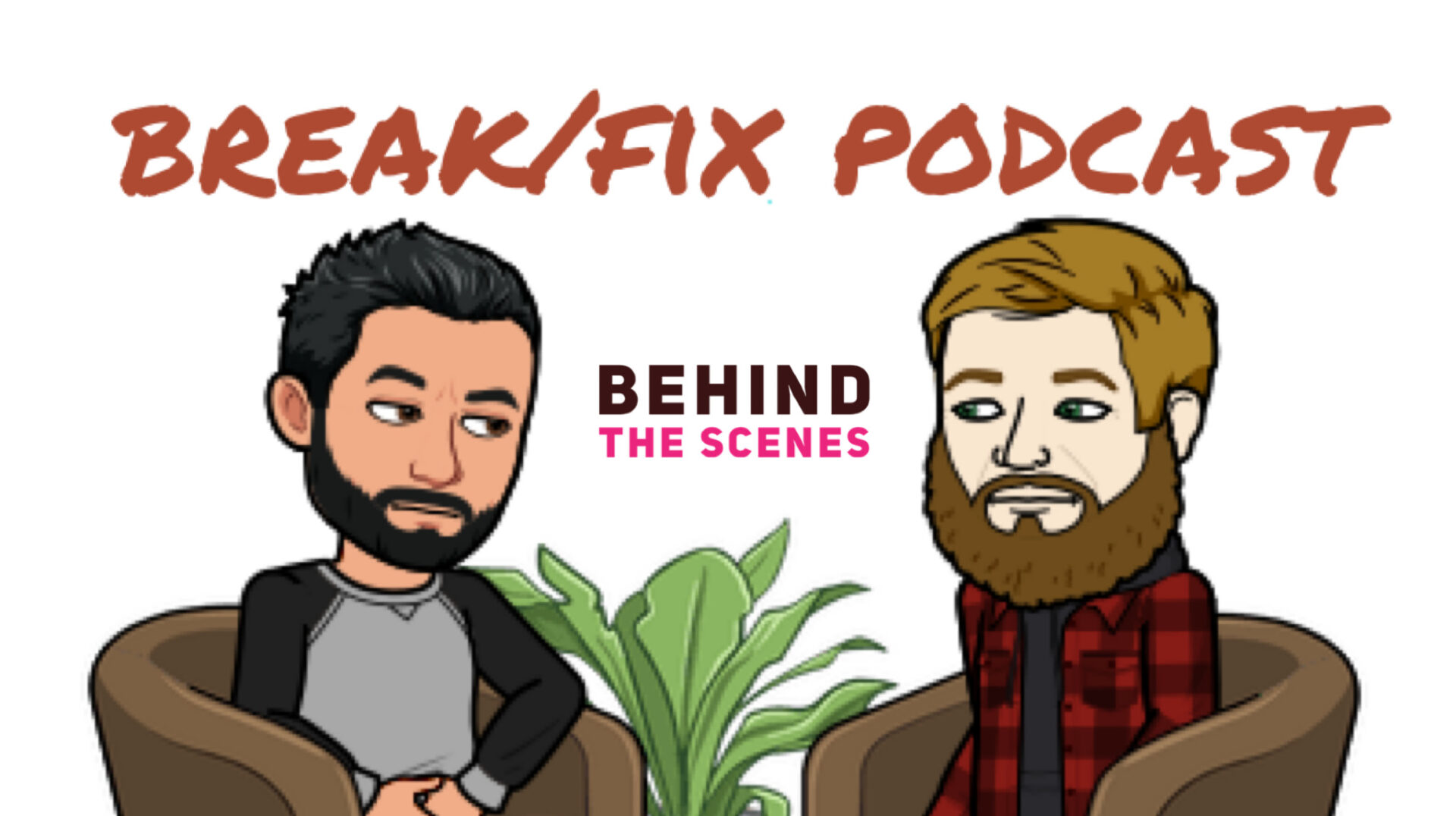
Consider becoming a GTM Patreon Supporter and get behind the scenes content and schwag!
Do you like what you've seen, heard and read? - Don't forget, GTM is fueled by volunteers and remains a no-annual-fee organization, but we still need help to pay to keep the lights on... For as little as $2.50/month you can help us keep the momentum going so we can continue to record, write, edit and broadcast your favorite content. Support GTM today! or make a One Time Donation.

If you enjoyed this episode, please go to Apple Podcasts and leave us a review. That would help us beat the algorithms and help spread the enthusiasm to others by way of Break/Fix and GTM. Subscribe to Break/Fix using your favorite Podcast App:
 |  |  |
Lee Anne Patterson’s expertise includes designing and building turn-key programs, developing visionary business networking strategies, designing results-oriented marketing programs, and coordinating activation with measurable results including good-cause marketing elements. The Trouble with Howard, Lee Anne’s first children’s book – A book created by racers, about racers, for racers – Is now available for sale, and you can pick up a copy at www.troublewithhoward.com.
There's more to this story!
Be sure to check out the behind the scenes for this episode, filled with extras, bloopers, and other great moments not found in the final version. Become a Break/Fix VIP today by joining our Patreon.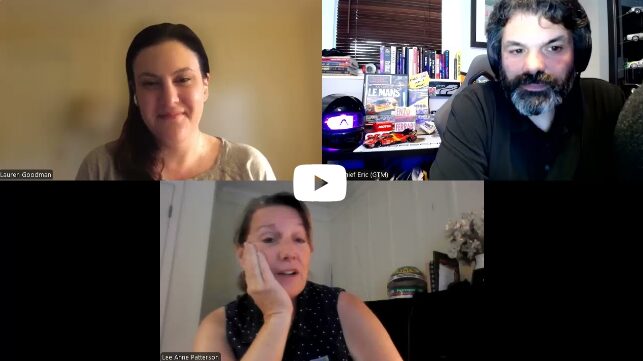
All of our BEHIND THE SCENES (BTS) Break/Fix episodes are raw and unedited, and expressly shared with the permission and consent of our guests.
To learn more about Lee Anne, be sure to follow her on Instagram and Facebook @leeannepatterson.author, or you can follow her on LinkedIn, or reach out via email at leeanne@thegroundeffects.com.
“The Trouble with Howard,” A Children’s Book Based on a Real-Life Racing Story
What could possibly go wrong if a skunk was in the pits at an auto race?
“The Trouble with Howard,” a children’s book based on a real-life story about auto racers Howard and Anita Millican and their pet skunk, is available now through the website TheTroubleWithHoward.com and at select retail outlets.
The 48-page hardcover book is a collaboration between author and motorsports veteran Lee Anne Patterson, a native of Atlanta, and acclaimed racing illustrator Roger Warrick of Hamilton, Ohio.
The story is based on the experiences of driver and mechanic Howard Millican and his wife, Anita. The latter became the first woman licensed IndyCar mechanic in 1980. She was also the first woman to go over the pit wall during pit stops at IndyCar races as a pit crew member. She was the jack “man.”
The book promotes gender equality and encourages girls to tackle STEM careers. It also suggests how to handle bullies and ways to display good sportsmanship.
In addition, it inspires compassion towards animals. A portion of the proceeds will go to animal rescue operations.
Patterson wrote the book for children who are 5 to 8 years old. Each page carries Warrick’s colorful illustrations like a picture book. It is sure to resonate with auto racing fans of all ages as well as others with no knowledge of the sport.
The book chronicles the story of an injured wild skunk who was treated and adopted by Howard and Anita Millican before they were married. They named him “Trouble.” He travels with the couple from race to race, but never sprays anyone. Most of the racers learn to like Trouble with the exception of Jack, a driver who uses not-so-nice moves on and off the track.
One day Jack scares Trouble out of the tractor-trailer the Millicans use to transport their race car to events, and Trouble becomes lost. Scared and tired, he eventually finds a hiding place in the cockpit of Jack’s race car. He’s still hiding in it when a race starts.
On the last lap Jack gives Howard’s race car a shove in an effort to win. Terrified, Trouble runs up Jack’s chest. Jack loses control of the car and they crash.
Howard wins the race. Trouble and Jack are both unhurt, but Trouble sprays Jack.
Howard, Anita and Trouble celebrate in victory lane. Showing good sportsmanship, Howard gives Jack several cans of tomato juice to use to try to alleviate the odor from being sprayed.
Now Available Online and at Select Retail Outlets!
The book is available to ship now. It carries a suggested retail price of $18.50. Retailers who would like to carry the book are encouraged to contact M.L. Padden at REV Branding in Louisville, Ky., at mlpadden@revbranding.com or by calling (502) 727-4226.
“The Trouble with Howard” is published by Ground Effects Marketing, Inc. Its ISBN number is 979-8-9902067-0-0. For more information visit TheTroubleWithHoward.com.
Recommended Reads
- Reading List
- Goodreads
Reading List
Goodreads
Guest Co-Host: Lauren Goodman
In case you missed it... be sure to check out the Break/Fix episode with our co-host. |  |  |



